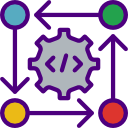The world of software development is rapidly evolving, and at the heart of this transformation lies the emergence of low-code and no-code platforms. These innovative tools empower businesses, entrepreneurs, and even individuals with limited technical expertise to create robust applications and digital workflows without the need for extensive coding knowledge. As these platforms expand in capability and reach, they are not only democratizing application development but also driving agility, accelerating project timelines, and reducing overall costs. In the sections below, we dive into the cutting-edge tools and technologies fueling this low-code/no-code revolution, examining how they are changing the way solutions are imagined, built, and deployed.

Visual Logic Editors
Seamless Data Integration
Event-Driven Automation
Natural Language Processing for App Creation
Intelligent Code Generation
Predictive Analytics and Recommendations
Cross-Platform Deployment
Security and Compliance Modules
Open API Management
Pre-Built Integration Catalogs
Custom Connector Builders
Citizen Development Enablement

